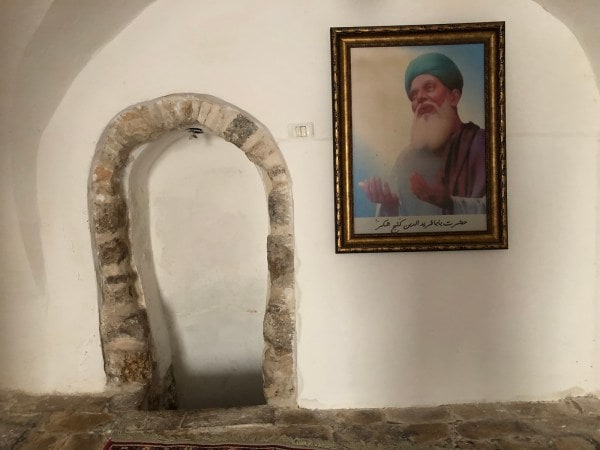BABA FARID-JERUSALEM
1. Context
Long before the city of Jerusalem became one of the world’s most contested places, India established its presence there in the 12th century. Within the ancient city’s walls stands a brown two-story stone building proudly displaying a plaque that reads, “Indian Hospice, Estd. 12th century A.D., supported by Ministry of External Affairs, Government of India, New Delhi.”
In October 2021, External Affairs Minister S Jaishankar unveiled this new plaque emphasising the 800-year connection between India and Jerusalem
2. Who is Baba Farid?
- Legend has it that Baba Farid, a Sufi saint from Punjab, spent 40 days in deep meditation at this place.
- Although he returned to Punjab, Indian Muslims going to Mecca started visiting the walled city of Jerusalem to pray at this spot
- Over time, this place transformed into a shrine and a hospice for travelers from India.
- Baba Farid, born in 1173 CE in the village of Kothewal near Multan, hailed from a family that had migrated from Kabul to Punjab.
- He followed the Chishti order and, was one of the first Sufi saints to write his verses in Punjabi. Many of these verses are enshrined in the Guru Granth Sahib, the holy book of Sikhs.
- During his travels in Punjab and beyond, he visited Jerusalem, where he prayed at the Al-Aqsa mosque and composed verses
- Lore has it that he found a modest lodge within one of the gates of Old Jerusalem, known as Bab-az-Zahra among Muslims and Herod’s Gate among Christians
- This lodge was situated within a compact khanqah dedicated structures for Sufi orders, serving as both seminaries for the order’s followers, and hospices for travelers atop a small hillock within Herod’s Gate

3. Significance of this Kanqah
- After Baba Farid’s departure, the khanqah evolved into a hospice for travellers from India, earning the name Zawiya Al-Hindiya, meaning “the Lodge of Hind.”
- Remarkably, despite changing hands, including Christian crusaders, Mamluks, and Ottoman rulers, the lodge retained its association with India
- The medieval traveller Evliya Chelebi described Zawiya Al-Hindiya—the Indian hospice as one of the largest Zawiyas in the city in 1671
- Navtej Sarna, a diplomat-author, uncovered a document from 1681 that detailed a leadership dispute over the lodge, and another document mentioned a sheikh named Ghulam Mohammad Al-Lahori who engaged with the Ottoman administration in 1824, resulting in the expansion of the lodge’s facilities
- The lodge’s prominence continued during the Ottoman rule, primarily under sheikhs from South Asia. However, a significant shift occurred when the Ottoman Empire’s dissolution began in 1919.
- By 1921, the Grand Mufti of Jerusalem, Amin Al-Husayni, took charge and initiated extensive renovations and rebuilding efforts. To fund these projects, the Grand Mufti sought support from Muslim patrons worldwide, including the Muslim princely states in British India
- In 1921, the Grand Mufti informed leaders of the Indian Khilafat Movement about the ‘Indian Lodge’ in dire need of repair. Khwaja Nazir Hasan Ansari, a young man from Saharanpur, Uttar Pradesh, took on the task.
- By 1924, he had completely renovated the lodge, which provided sanctuary to numerous travellers and pilgrims from British India for the next 15 years. During World War II in 1939, the lodge served as a refuge for soldiers from British India fighting in North Africa.
4. Indian Connection
- After India gained independence, Nazir Ansari sought official recognition for the lodge from the Indian embassy in Egypt, cementing its Indian identity.
- The lodge has faced several conflicts, enduring rocket strikes in 1952 and the Six Day War in 1967
- Over time, the Indian Hospice expanded to its current 7,000 square metres. It also hosts the United Nations Relief and Works Agency for Palestine Refugees (UNRWA) and the Jerusalem Health Centre within its premises
- In 2000, the hospice was the site of a meeting between former Indian Foreign Minister Jaswant Singh and Palestinian leader Faisal Husseini
5. Way forward
This property is under the ownership of the Waqf Board of India and is accessible only to individuals of Indian citizenship or heritage. The hospice features six guest rooms, a small mosque, a library, a dining hall, and a kitchen. Guests are encouraged to take care of their own cooking and laundry, utilising supplies and equipment provided by the hostel
Source: indianexpress




